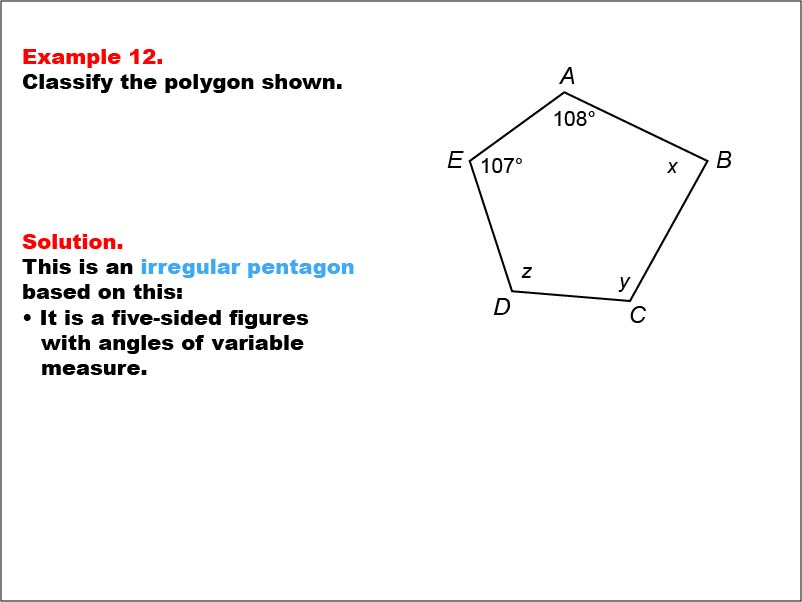
Display Title
Math Example--Polygons--Polygon Classification: Example 12
Display Title
Math Example--Polygons--Polygon Classification: Example 12

Topic
Polygons
Description
This example features a pentagon labeled with vertices A, B, C, D, E, where the angles are marked as 108°, x, y, z, and 107°. It demonstrates an irregular pentagon based on the variation in angle measures, highlighting that regularity depends on all angles being equal.
Understanding polygon classification is essential in geometry as it helps students recognize and categorize shapes based on their properties. This collection of examples emphasizes the importance of angle measures in determining the regularity of pentagons, showing that even one different angle makes the polygon irregular.
Exposure to multiple worked-out examples is vital for students to develop a comprehensive understanding of polygon classification. Each example presents a unique scenario, allowing students to apply their knowledge and reinforce their ability to distinguish between regular and irregular polygons based on angle measures.
Teacher's Script: Let's examine this pentagon together. We see some angles with specific measures and others with variables. What does this tell us about the angles? How can we use this information to classify the pentagon as irregular? Think about why having even one angle different from the others affects the regularity of the entire shape.
For a complete collection of math examples related to Polygons click on this link: Math Examples: Polygon Classification Collection.
| Common Core Standards | CCSS.MATH.CONTENT.5.G.B.3, CCSS.MATH.CONTENT.7.G.B.6 |
|---|---|
| Grade Range | 6 - 8 |
| Curriculum Nodes |
Geometry • Polygons • Definition of a Polygon |
| Copyright Year | 2013 |
| Keywords | polygons, classification |